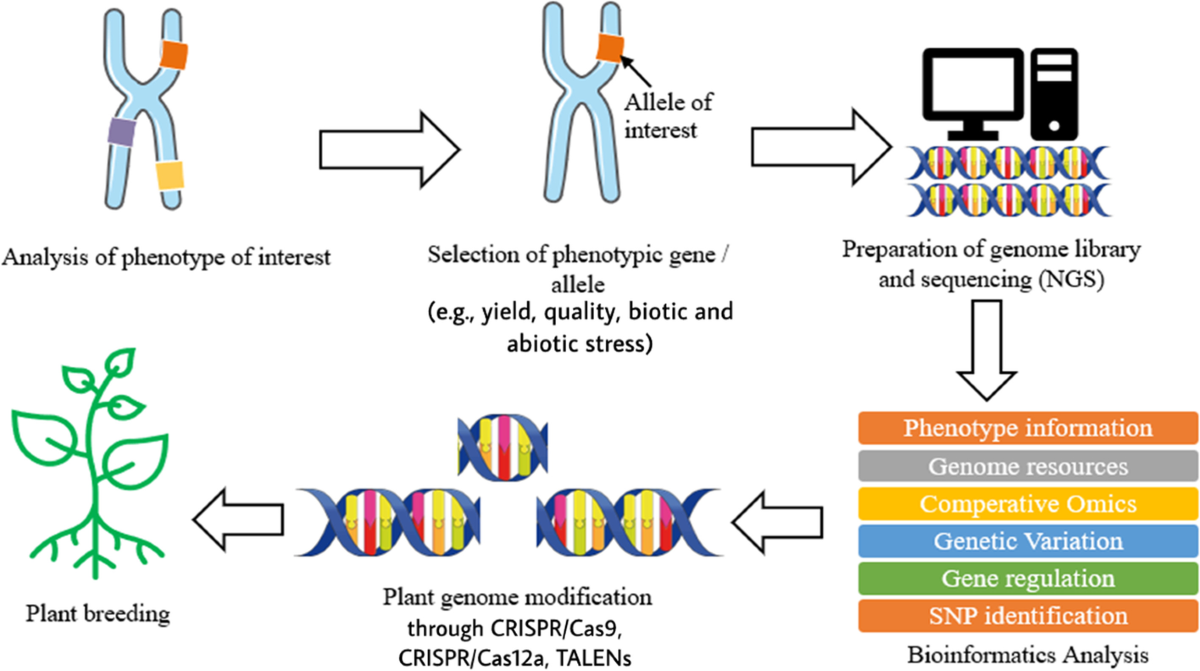The Main Principles Of Bioinformatics Tutor
Table of Contents8 Simple Techniques For Bioinformatics TutorThe 7-Minute Rule for Bioinformatics TutorFacts About Bioinformatics Tutor UncoveredBioinformatics Tutor for DummiesBioinformatics Tutor Things To Know Before You Get This
First project advancement is rather time-consuming, as it includes mindful planning of the topic, structuring of deliverables, and factor to consider of the abilities and experience levels of participants. Nonetheless, as soon as a project has been plainly specified and implemented, it has the prospective to be recycled in future sessions with only small revisions to reflect updates in the field or fit distinctions in individual backgrounds. This makes project-based learning a sustainable and effective mentor approach in the future, especially in rapidly developing self-controls like bioinformatics.To make sure connection and reproducibility of understanding, providing shared lab notebooks-- either physical or digital-- is critical. These notebooks work as collaborative logs where students can tape-record their development, code, approaches, and results throughout the course. Not only do they enhance knowing by urging paperwork and representation, yet they additionally act as post-course referral products that participants can seek advice from in future research study or academic projects.
Advisors play an important duty in the success of project-based training courses. Mentors additionally act as function versions and inspire pupils to proceed going after jobs in computational biology and associated areas.
10 Easy Facts About Bioinformatics Tutor Explained
One more secret facet of the learning procedure is giving participants the opportunity to provide their work to others, especially to a target market past their prompt task team. Last presentations or mini-conferences allow students to articulate their findings, receive useful comments, and gain self-confidence in interacting clinical web content. This discussion part is usually a favorite among students, as it validates their initiatives and highlights the real-world relevance of their work.
The effectiveness of this approach was evidenced by the overwhelmingly positive responses obtained after the first course was provided. The success triggered repeat offerings of the exact same training course layout in 2015 and 2016. Each model of the program was fine-tuned based upon participant feedback and developing best practices in rearing. These adaptations ensured that the core objectives-- hands-on understanding, cooperation, and used problem-solving-- remained undamaged while broadening the depth and breadth of subjects covered.
A significant visualization that captured individual belief was a word cloud generated from feedbacks to the 2014 end-of-course survey. Individuals were asked, "What was the most effective part of the training course?" and their reactions were assembled into a visual word cloud. In this depiction, the size of each word suggests how often it was mentioned, with words like "hands-on," "cooperation," "real-life problems," "advice," and "interactive" appearing most plainly. This aesthetic feedback enhanced the program's emphasis on experiential understanding and coach assistance.
The payments of people such as Rustici, G., Orchard, S., Cowley, A., and Twells, R., along with various other participants of the EBI user-training-working group, contributed in improving the course structure and web content. Their understandings helped shape a comprehensive and flexible version that can be adapted to different institutional and local contexts.
Rumored Buzz on Bioinformatics Tutor

Jones, Rasmussen, and Moffitt (1997) also supported for interdisciplinary knowing via collaborative job work, noting its capability to imitate expert settings and prepare trainees for future academic or market roles. In an extensive review, Thomas (2000) examined numerous studies on PBL and ended that students not just perform well academically however additionally create a much deeper understanding of the topic and improved team effort abilities.
In the context of bioinformatics education and learning, innovative techniques like classroom video games and simulation-based training have actually also been employed. As an example, Schneider and Jimenez (2013) presented making use of interactive games to instruct organic information assimilation, making it possible for pupils to grasp complex ideas with experiential discovering. This kind of gamification complements the hands-on knowing emphasized in project-based courses by introducing an element of enjoyable and competitors, which can better boost involvement.
Going back to the training course gone over right here, the lessons picked up from the application of project-based knowing in a bioinformatics setting have more comprehensive implications for other STEM areas. The method highlights not just technical effectiveness, yet likewise communication, collaboration, and critical reasoning-- abilities that are progressively valued in both academia and sector.
The Buzz on Bioinformatics Tutor
The scalability of the program layout additionally makes it a feasible model for various other institutions. With proper customization based upon local requirements, readily available resources, and individual profiles, the structure can be duplicated or adjusted for use in various other scientific domains. In addition, the inclusion of organized mentorship and analysis techniques aids ensure constant top quality and measurable discovering end results.
To conclude, project-based learning in bioinformatics uses a powerful strategy to teaching facility, interdisciplinary material in such a way that is both accessible and intellectually promoting. By stressing collaboration, functional application, and crucial query, such campaigns not only improve private understanding but also contribute to the growing of a brand-new generation of ingenious and proficient scientists.
Bioinformatics Tutor Can Be Fun For Everyone

An additional key facet of the understanding procedure is providing individuals the opportunity to present their job to others, particularly site to a target market past their prompt task team.In the more comprehensive instructional literary works, project-based understanding (PBL) has actually been thoroughly researched and confirmed as an efficient technique for promoting deep understanding, vital thinking, and transferable skills. Adderley et al. (1975) stressed the worth of task techniques in higher education and learning, noting that they promote energetic understanding and freedom. Schneider and Jimenez (2013) presented the use of interactive games to educate organic data integration, enabling pupils to realize complicated concepts through experiential understanding.